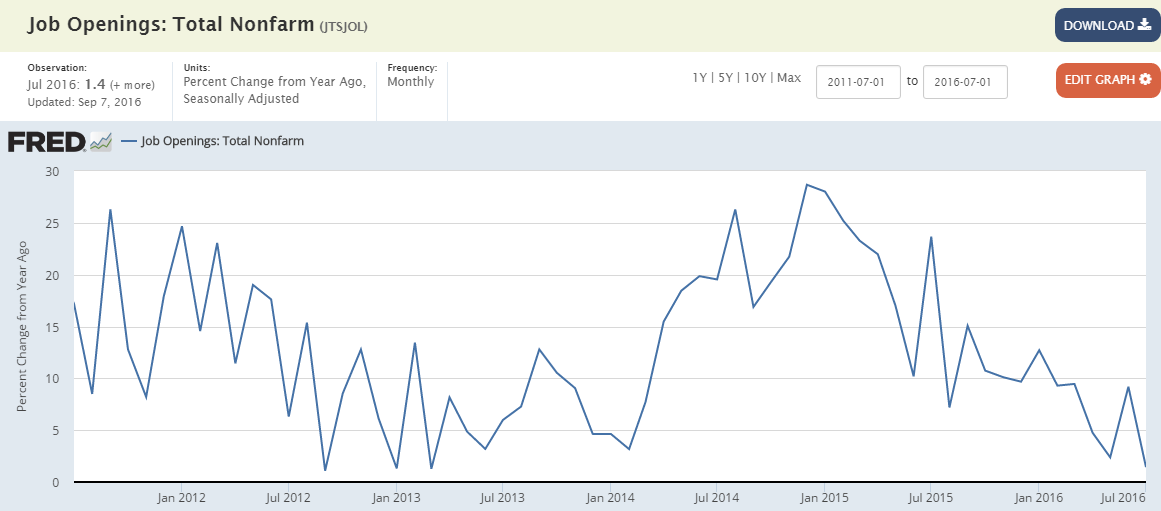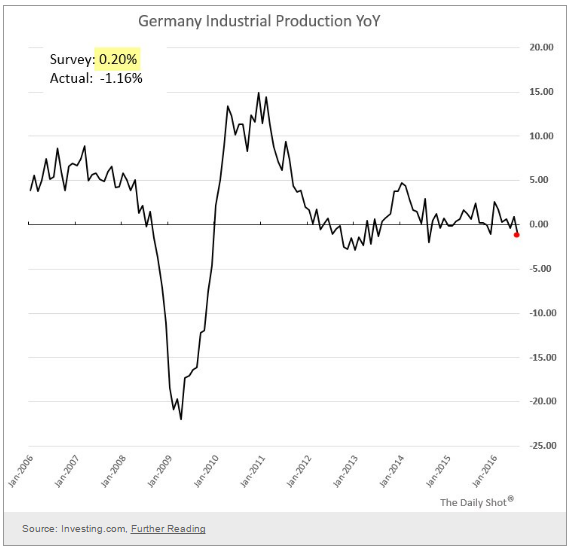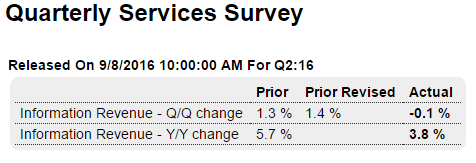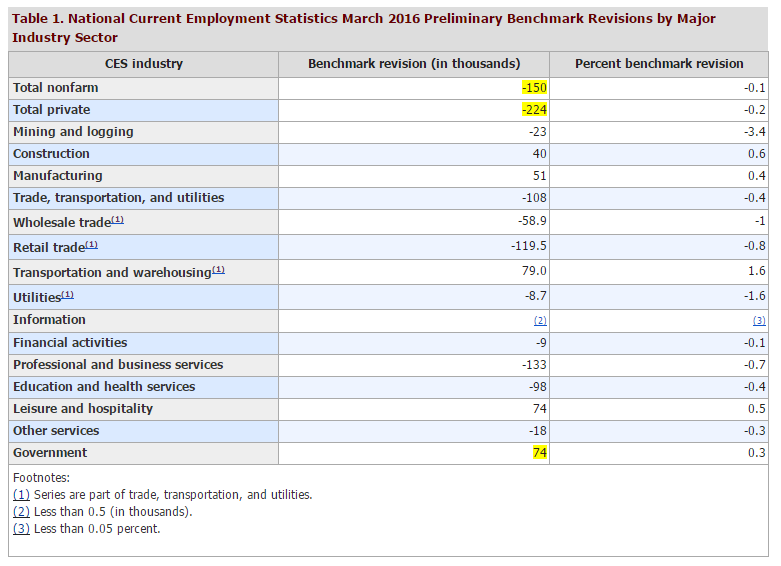Interesting how it peaked as oil capex collapsed;) Highlights Information revenue fell 0.1 percent in the second quarter compared to the first quarter. Information revenue in the first quarter is revised 1 tenth higher to plus 1.4 percent. Year-on-year, information revenue rose 3.8 percent in the second quarter vs an unrevised 5.7 percent gain in the first quarter. This is the beginning of the ‘revisions’ previously discussed. The govt. estimates jobs created by net new businesses each month (called the birth/death model) and then makes revisions as they get hard data. And during ‘slow downs’ the revisions tend to be downward: BLS released the initial estimate of the annual benchmark revision to payrolls that will be released in February. They anticipate that payrolls in March 2016 will be revised down 150,000, or 0.1% The annual benchmark revision is to the level of payrolls in the benchmark month with backward revisions over the prior year. So a 150,000 downward adjustment would mean payroll growth from April 2015 through March 2016 being 12,500 a month lower. That would continue a run of only small benchmark revisions in recent years: With car sales fading next one will be lower still on a year over year basis.
Topics:
WARREN MOSLER considers the following as important: Uncategorized
This could be interesting, too:
tom writes The Ukraine war and Europe’s deepening march of folly
Stavros Mavroudeas writes CfP of Marxist Macroeconomic Modelling workgroup – 18th WAPE Forum, Istanbul August 6-8, 2025
Lars Pålsson Syll writes The pretence-of-knowledge syndrome
Dean Baker writes Crypto and Donald Trump’s strategic baseball card reserve
Interesting how it peaked as oil capex collapsed
;)



Highlights
Information revenue fell 0.1 percent in the second quarter compared to the first quarter. Information revenue in the first quarter is revised 1 tenth higher to plus 1.4 percent. Year-on-year, information revenue rose 3.8 percent in the second quarter vs an unrevised 5.7 percent gain in the first quarter.
This is the beginning of the ‘revisions’ previously discussed. The govt. estimates jobs created by net new businesses each month (called the birth/death model) and then makes revisions as they get hard data. And during ‘slow downs’ the revisions tend to be downward:
BLS released the initial estimate of the annual benchmark revision to payrolls that will be released in February. They anticipate that payrolls in March 2016 will be revised down 150,000, or 0.1% The annual benchmark revision is to the level of payrolls in the benchmark month with backward revisions over the prior year. So a 150,000 downward adjustment would mean payroll growth from April 2015 through March 2016 being 12,500 a month lower. That would continue a run of only small benchmark revisions in recent years:


With car sales fading next one will be lower still on a year over year basis. And note the deceleration since oil capex peaked:

Highlights
Consumer credit is up strongly at the headline level but there’s slowing in the revolving credit component which is where credit cards are tracked. Total credit rose $17.7 billion in July, up from an upwardly revised $14.5 billion in June. Revolving credit, however, rose only $2.8 billion in the month, down from June’s $9.2 billion. Reluctance to use credit cards may be a plus for long-term consumer health but it’s a short-term negative for the nation’s retailers and service providers. Non-revolving credit continues to post very strong gains, up $14.9 billion in July and reflecting strength in vehicle financing and student loans which are tracked in this component.

